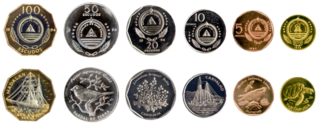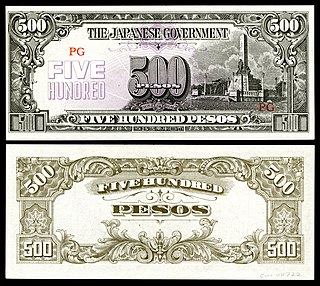Leper colony money was special money (scrip or vouchers) which circulated only in leper colonies (sanatoriums for people with leprosy) due to the fear that money could carry leprosy and infect other people. However, leprosy is not easily transmitted by casual contact or objects; actual transmission only happens through long-term, constant, intimate contact with leprosy sufferers and not through contact with everyday objects used by sufferers.
Leprosariums emerged during the Middle Ages as places to confine people. They were known as lazarettos due to the Order of Saint Lazarus and his patron saint: protector of hospitals and lepers. These confinement centers were erected in particularly remote areas and had facilities to cover quarantine periods for the sick.
They were used assiduously until a cure for the disease was developed. At the First International Conference on Leprosy (Berlin, 1897), Hansen recommended the isolation of the sick as a preventive measure. Other specialists also proposed minting coins for restricted use in such places. These measures were in force until 1981 when the World Health Organization determined a treatment to cure the disease. [1]
Special leper colony money was used between 1901 and around 1955.
The original reason for leper colony money was the prevention of leprosy in healthy persons. In 1938, Dr. Gordon Alexander Ryrie in Malaysia proved that the paper money was not contaminated with leprosy bacteria, and all the leper colony banknotes were burned in that country. [2] [3]
The Mexican peso is the official currency of Mexico. The peso was first introduced in 1863, replacing the old Spanish colonial real. The Mexican peso is subdivided into 100 centavos, represented by "¢". Mexican banknotes are issued by the Bank of Mexico in various denominations and feature vibrant colors and imagery representing Mexican culture and history. Modern peso and dollar currencies have a common origin in the 16th–19th century Spanish dollar, most continuing to use its sign, "$".
The quetzal is the currency of Guatemala, named after the national bird of Guatemala, the resplendent quetzal. In ancient Mayan culture, the quetzal bird's tail feathers were used as currency. It is divided into 100 centavos, or len in Guatemalan slang. The plural is quetzales.

The Philippine peso, also referred to by its Filipino name piso, is the official currency of the Philippines. It is subdivided into 100 sentimo, also called centavos.

The Portuguese escudo was the currency of Portugal replacing the real on 22 May 1911 and was in use until the introduction of the euro on 1 January 2002. The escudo was subdivided into 100 centavos. The word escudo literally means shield; like other coins with similar names, it depicts the coat of arms of the state.

A leper colony, also known by many other names, is an isolated community for the quarantining and treatment of lepers, people suffering from leprosy.

Banknotes of the Philippine peso are issued by the Bangko Sentral ng Pilipinas for circulation in the Philippines. The smallest amount of legal tender in wide circulation is ₱20 and the largest is ₱1000. The front side of each banknote features prominent people along with buildings, and events in the country's history while the reverse side depicts landmarks and animals.

Philippine peso coins are issued by the Bangko Sentral ng Pilipinas for circulation in the Philippines and are currently available in seven denominations. The Philippine peso has been in use since Spanish rule.

The Dominican peso, officially the peso dominicano since 2010, is the currency of the Dominican Republic. Its symbol is "$", with "RD$" used when distinction from other pesos is required; its ISO 4217 code is "DOP". Each peso is divided into 100 centavos ("cents"), for which the ¢ symbol is used. With exception of the United States dollar, it is the only currency that is legal tender in the Dominican Republic for all monetary transactions, whether public or private.
The colón was the currency of El Salvador from 1892 until 2001, when it was replaced by the U.S. dollar during the presidency of Francisco Flores. The colón was subdivided into 100 centavos and its ISO 4217 code was SVC. The plural is "colones" in Spanish and the currency was named after Christopher Columbus, known as Cristóbal Colón in Spanish.

Culion, officially the Municipality of Culion, is a 3rd class municipality in the province of Palawan, Philippines. According to the 2020 census, it has a population of 23,213 people.

The escudo is the currency of the Republic of Cape Verde. One escudo is subdivided into one hundred centavos.
The Manila Mint was a coinage mint that briefly served as a branch of the United States Mint, located in Manila, now the capital city of the Philippines.

During World War II in the Philippines, the occupying Japanese government issued a fiat currency in several denominations; this is known as the Japanese government-issued Philippine peso. The Japanese government outlawed possession of guerrilla currency, and declared a monopoly on the issuance of money, so that anyone found to possess guerrilla notes could be arrested or even executed.

Emergency circulating notes were currency printed by the Philippine Commonwealth Government in exile during World War II. These "guerrilla pesos" were printed by local government units and banks using crude inks and materials. Due to the inferior quality of these bills, they were easily mutilated.
The banknotes of the Sungei Buloh Settlement were issued as leprosy colony money in 1935 and 1936, at Sungai Buloh, Selangor, British Malaya when it was a leper colony. The currency was pegged to the Straits Settlements dollar. These notes are extremely scarce. They were all printed by the Survey Department, Federated Malay States. They have never been listed in the Standard Catalog of World Paper Money.

Japanese invasion money, officially known as Southern Development Bank Notes, was currency issued by the Japanese Military Authority, as a replacement for local currency after the conquest of colonies and other states in World War II.

The Brazilian real is the official currency of Brazil. It is subdivided into 100 centavos. The Central Bank of Brazil is the central bank and the issuing authority. The real replaced the cruzeiro real in 1994.
The Culion leper colony is a former leprosarium located on Culion, an island in the Palawan province of the Philippines. It was established by the U.S. government in order to rid leprosy from the Philippine Islands through the only method known at the time: isolating all existing cases and gradually phasing out the disease from the population. In addition to segregating the disease from the rest of the population, the island was later established in order to offer a better opportunity for people afflicted with leprosy to receive adequate care and modern treatments.
The history of Philippine money covers currency in use before the Hispanic era with gold Piloncitos and other commodities in circulation, as well as the adoption of the peso during the Hispanic era and afterwards.

The cruzeiro, initially denominated cruzeiro novo, was the currency of Brazil between 1967 and 1986. It is the second of the 3 historical Brazilian currencies called "cruzeiro".
















